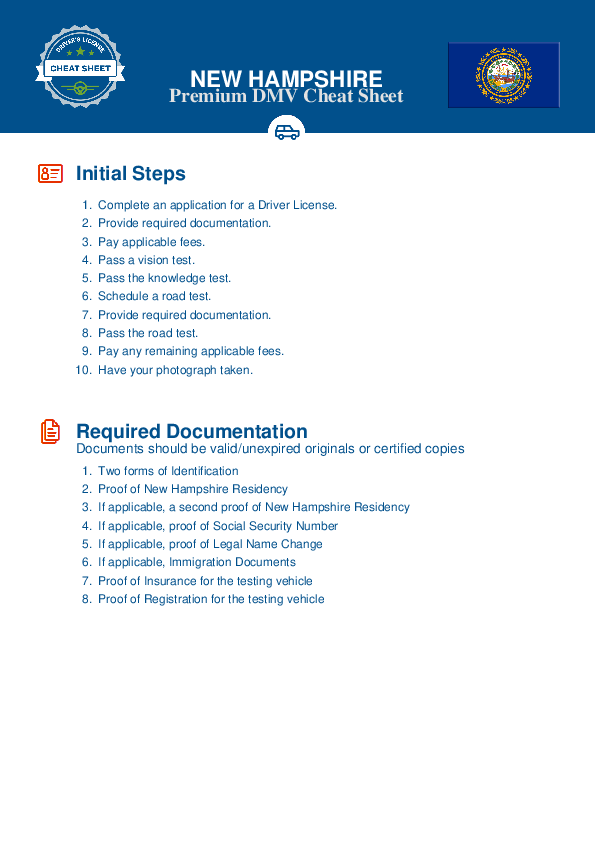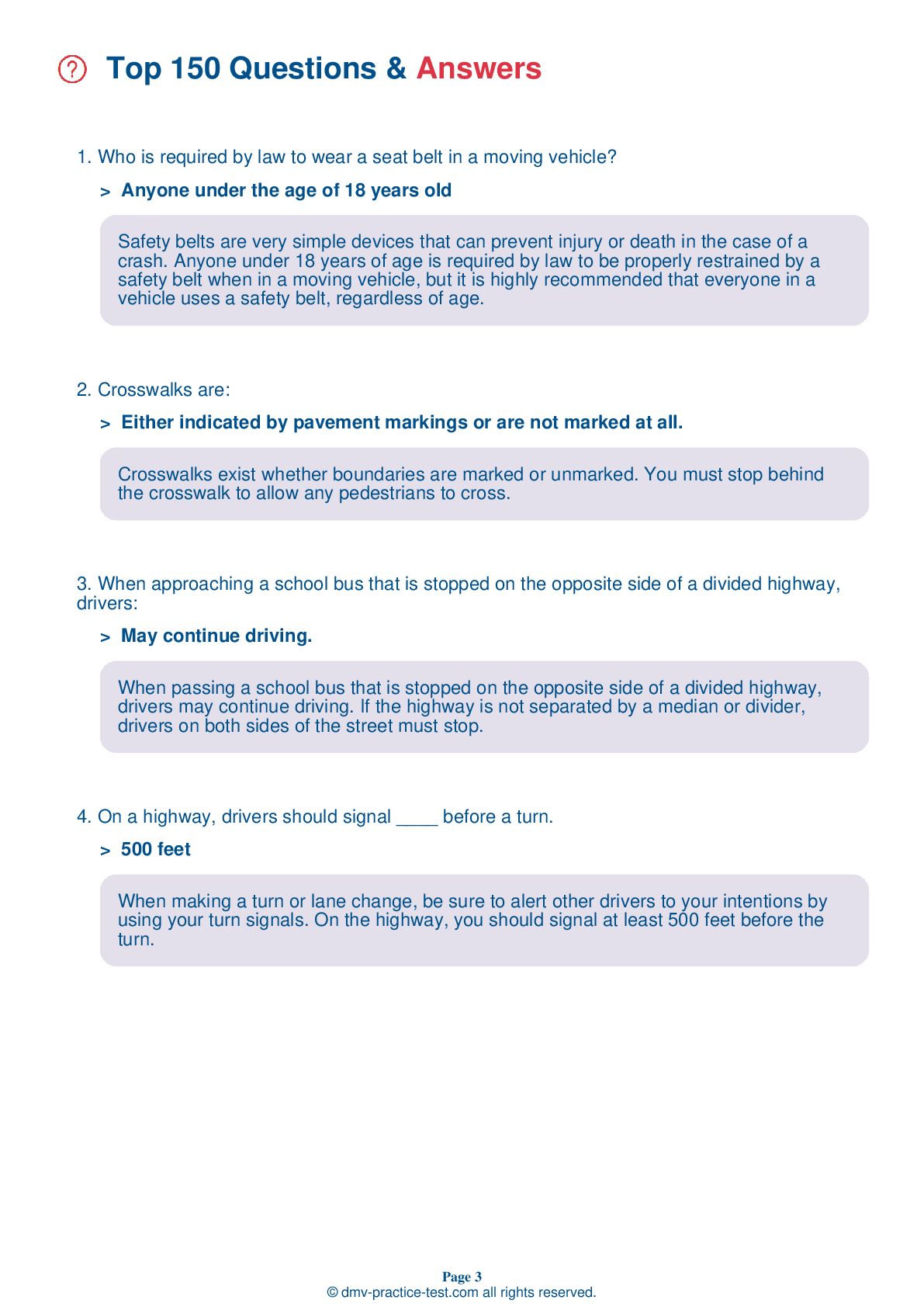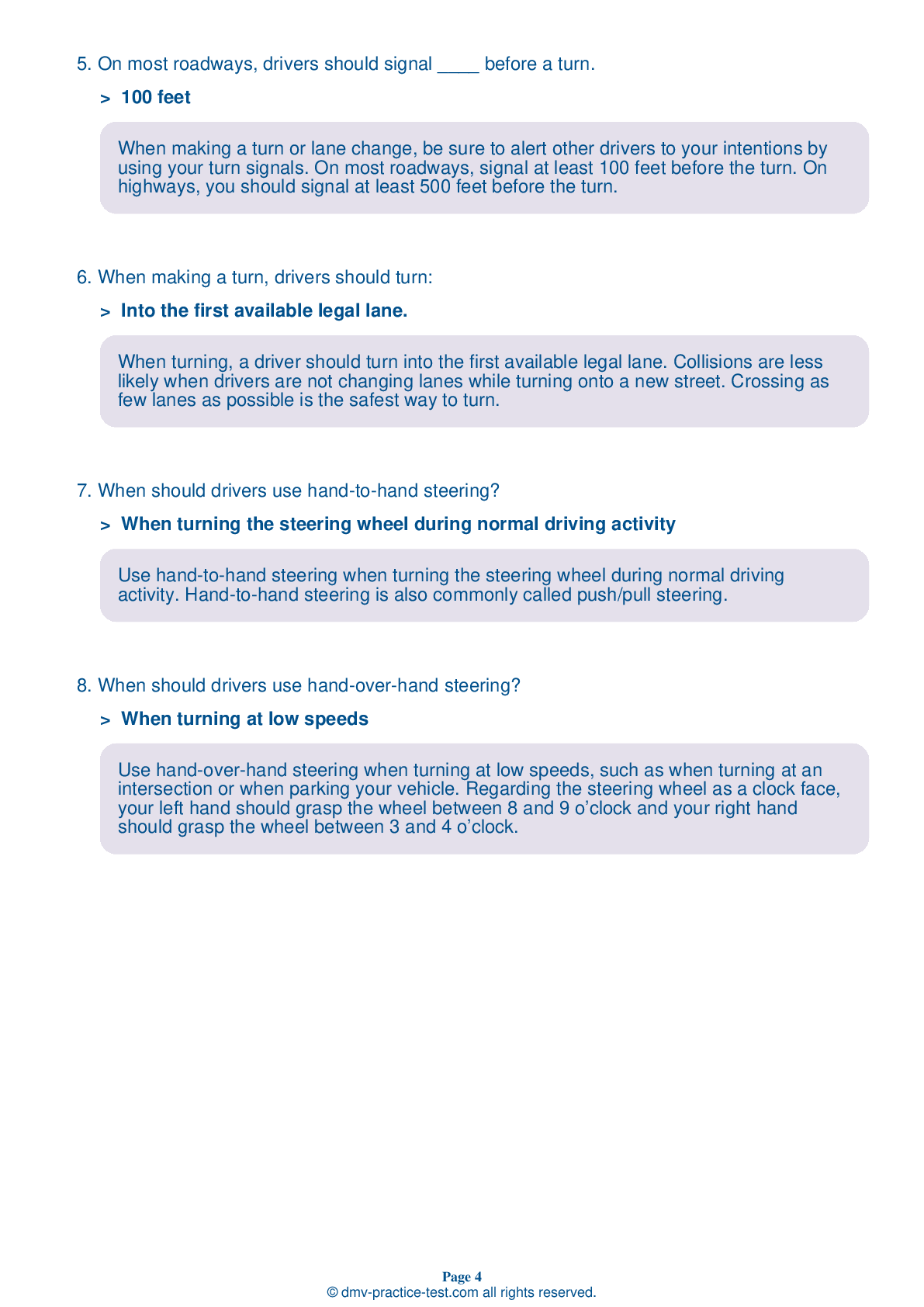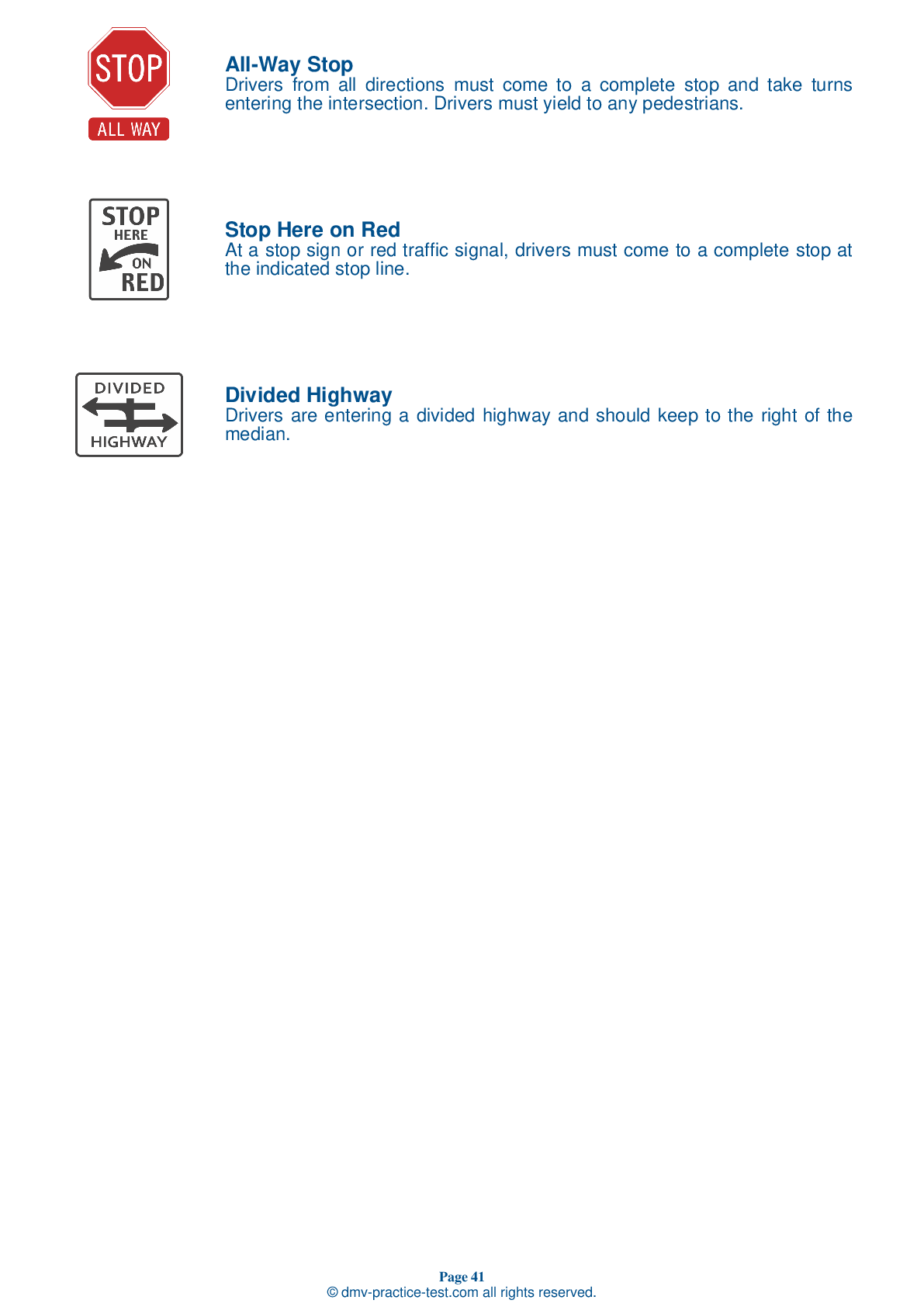FREE New Hampshire DMV Practice Test #6 Page 4 of 5
The DMV practise exams in New Hampshire have been updated for January 2025. It includes questions based on the most important traffic signals and legislation in the New Hampshire Driver Handbook for 2025. To study for the DMV driving permit test and driver's licence exam, use actual questions that are very similar (often identical!) to the DMV driving permit test and driver's licence exam.
Each question on the practise exam has a tip and explanation to help you recall the ideas. Questions about traffic rules, traffic signs, and driving statutes, as well as knowledge from the Driver Handbook, will be included in the written portion of the official New Hampshire DMV test.
You must properly answer 32 of the 40 questions to receive a passing mark. Take this New Hampshire DMV practise exam to help you prepare for your instruction permit or driver's licence.
The DMV exam is offered in a variety of languages.
Using any form of testing help will result in an automatic fail, and the DMV may take further action against your driver's licence, so avoid it.
25 . A driver entering interstate traffic from an entrance or acceleration ramp:
If you are on an entrance or acceleration ramp and are entering interstate traffic, you should yield to drivers already on the interstate highway. Merge safely into traffic when you are able to do so.
26 . When driving in rain, you must:
In rainy conditions, you should use your low beam headlights.
27 . What should you do if your accelerator sticks while you are driving?
If your accelerator sticks while you are driving, keep your eyes on the road. Quickly shift the vehicle into neutral and apply steady pressure on the brake pedal. Pull off the road when it is safe to do so and turn off the engine.
28 . When a vehicle with an Anti-Lock Braking System starts to lose traction on a slippery road, drivers should:
If their vehicle loses traction on a slippery road, a driver with an Anti-Lock Braking System (ABS) needs to press down hard on the brake pedal, hold it, and steer out of danger. In an emergency situation, the ABS automatically pumps the brakes at a faster rate than the driver could. Removing steady pressure from the brake pedal or pumping the brakes will disengage the ABS.
29 . If an emergency vehicle with flashing lights is traveling in the area where you are driving, you should:
If an emergency vehicle with flashing lights is traveling in the area where you are driving, you must make every effort to give them a clear path of travel. If it is safe to do so, pull your vehicle to the side of the road to give the emergency vehicle an open pathway.
30 . You are borrowing an unfamiliar vehicle from a friend. You should:
When driving an unfamiliar vehicle, take a few minutes before driving to familiarize yourself with the location and operation of the turn signals, hazard warning signals, headlights and beam selector, windshield wipers and washers, brakes, gear selector, and horn. Any defects should be corrected before the vehicle is driven.
31 . This sign means:
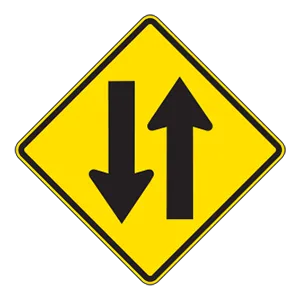
Warning signs prepare drivers for upcoming road conditions and hazards and are usually yellow with black markings. This sign tells drivers that they may encounter traffic coming from the opposite direction.
32 . A leaking exhaust system can:
The exhaust system helps remove toxic gases, reduce the noise, and cool the hot gases coming from a running engine. Fumes from a leaky exhaust system can cause death in a very short time. They can also make you drowsy while driving.
Need Car Insurance? No problem!
Compare the best rates in New Hampshire and find a personalized policy that meets your needs.
1. Are You Currently insured ?
2. Married ?
3. Do you own your Home?
4. Do you have more than 1 car ?
5. Have you or a Family Member Honorably Served in U.S. Military ?
6. Your Name
7. Age
8. Zip code
IMPORTANT REMINDER:Auto Insurance is Mandatory to drive in New Hampshire. Get covered before you hit the road to avoid any fines.
Ranked by best match
